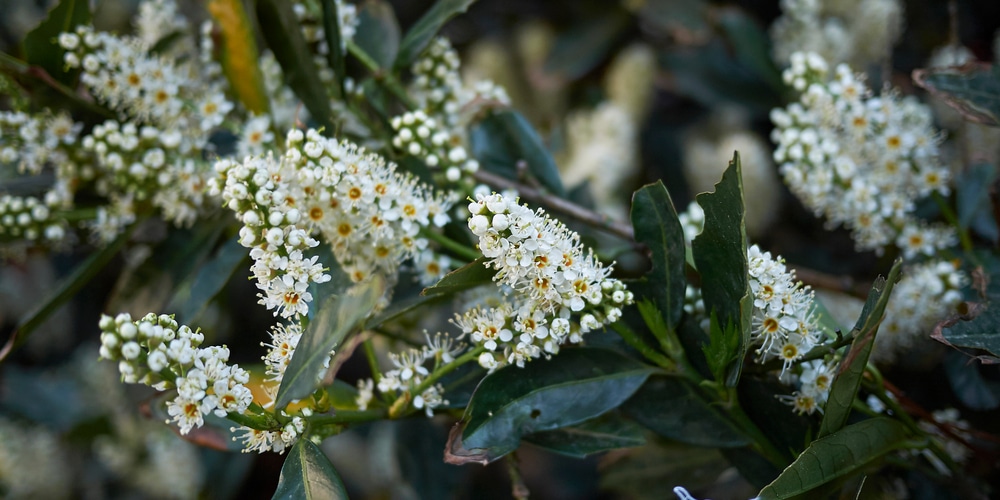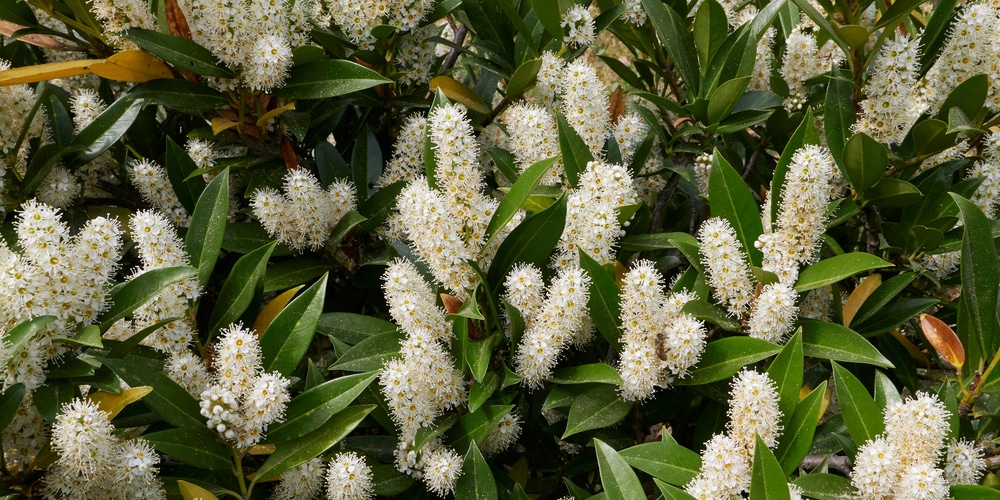Otto Luyken Laurel is a medium-sized shrub that performs excellently in foundation plantings. You might also know it as cherry laurel, another common name for this plant.
But, regardless of how you name it, this plant thrives in USDA hardiness zones between 6 and 8. It grows compact and produces attractive and fragrant white blooms from May to July, followed by blackberries. While Otto Luyken Laurel isn’t particularly challenging to grow, you should know what to do about it if it falls prey to diseases.
Read on to find everything you need to know about Otto Luyken Laurel’s diseases.
Otto luyken laurel diseases
Indeed, despite being resistant to most conditions, this plant might suffer from a couple that could harm it severely. Knowing about them can help you better identify the issue and use preventive measures to reduce their appearance.
Fungal Diseases
Overwatering is one of the most common sources of issues with many plants. While Otto Luyken likes moisture, too much watering might cause the appearance of fungal diseases.
Indeed, this laurel cultivar is susceptible to root rot and powdery mildew. Such conditions enter the roots and might hinder the transfer of water and nutrients. Over time, they may cause your plant’s death.
If your plant looks stressed, discolored, and dropping, you should consider the possibility of a fungal infection affecting your tree. On the other hand, if you notice the appearance of white powder on the leaves’ surface, there is no doubt what’s causing it is powdery mildew.
Treating such diseases might be challenging. Most of the time, the best thing you can do is transplant your laurel to a new (well-draining and dry) substrate. Don’t forget to feel the soil with your fingers before adding extra moisture: if it isn’t dry, wait for a couple more days.
If the situation is drastic, apply a fungicidal treatment. Don’t forget to follow the instructions you find on the product’s label to prevent harming your plants. Also, spray the solution on the upper and lower sides of the leaves to increase your chances of success.
Bacterial Infections
Another cause of problems that you might deal with when planting Otto Luyken Laurel is the so-called “shot hole.” Bacterial pathogens cause such a condition, which usually appears in the summer. The symptoms include brown sores around the undersides of your plant’s leaves. Take prompt action when you notice something wrong with your plant: the spot will eventually grow and develop red and yellow borders.
Again, treating this condition might be challenging. So, prevention will be crucial to keep your plants healthy. Jump to the following section to learn how to recreate the ideal growing conditions for your plants.
How to Prevent Diseases
More often than not, prevention is much better than the cure. You can prevent the appearance of most diseases by providing your laurel with adequate care. For instance, you should plant it in a sunny location, where it will receive at least 5 hours of sunlight per day. Also, don’t forget to avoid saturating the soil and ensure adequate airflow.
Choose a well-draining substrate for your plants. If necessary, amend your soil to increase drainage. You can reduce compaction by adding sand or gravel.
If you suspect the presence of fungi or bacteria, you should take immediate action to contain the infection. For instance, eliminate unhealthy-looking branches and destroy affected plant tissues. Don’t forget to rake up the litter to prevent pathogens from getting to other plants nearby.
Otto Luyken Laurel might grow aggressively under optimal conditions. Prune it regularly to keep it in shape and ensure adequate airflow. Don’t forget to use sterile scissors to prevent the spread of diseases.
For best results, use a pair of hand pruners. Also, keep in mind that these plants’ foliage and berries might be toxic to humans and animals. Don’t forget to remove litter to prevent any problems.
Related Article: White Flowers in Florida

